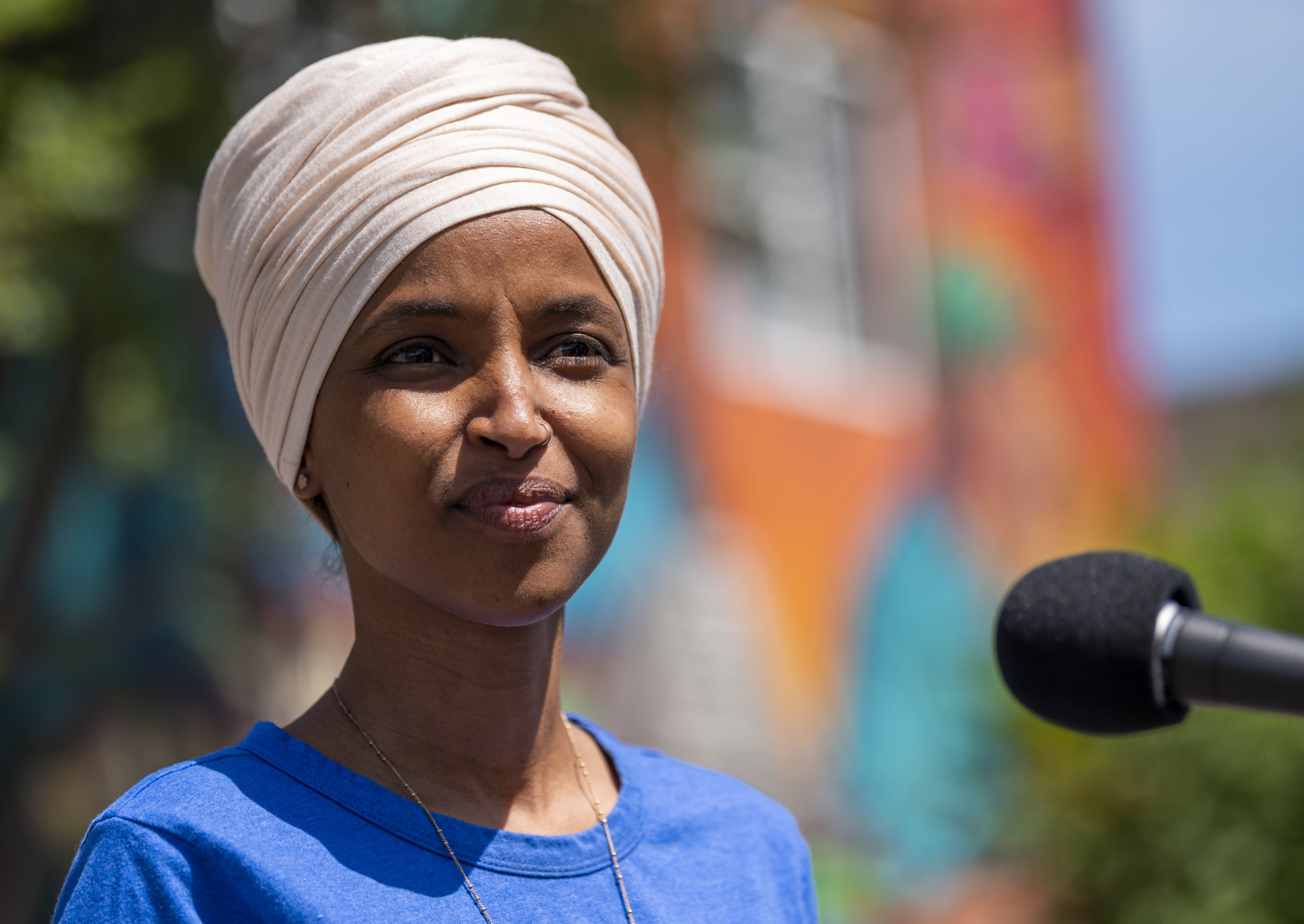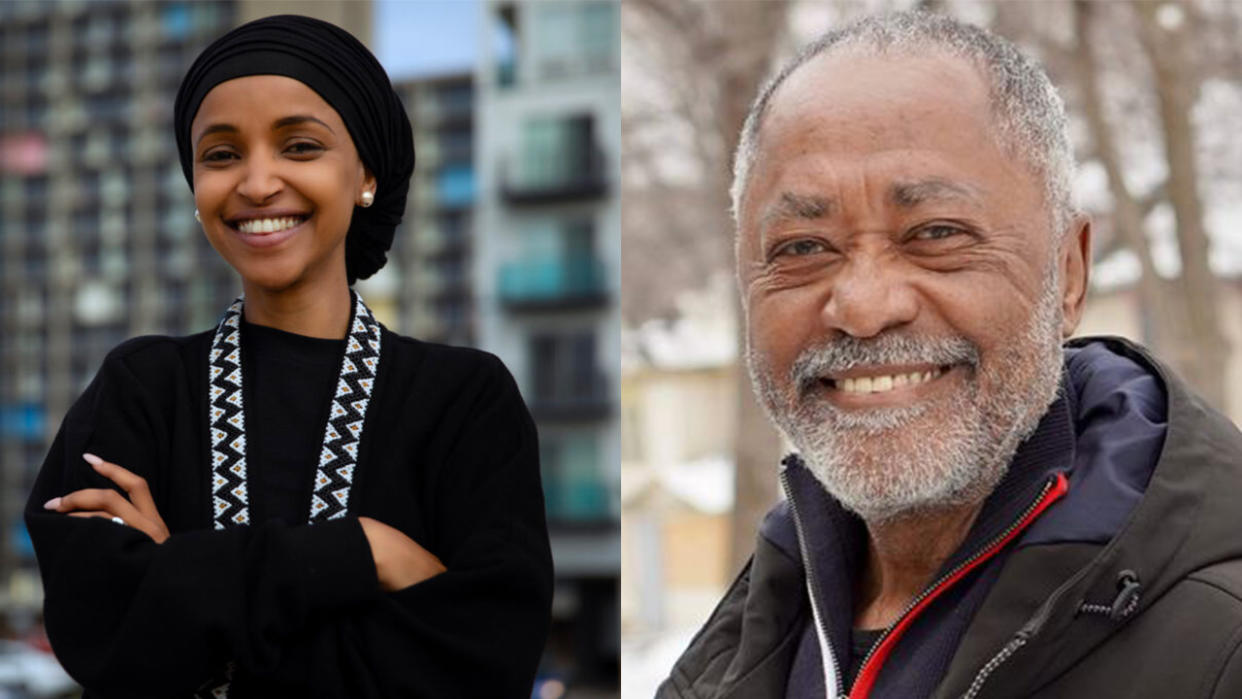Ilhan Omar’s Electoral History
Ilhan Omar’s electoral journey has been marked by a series of impressive victories, showcasing her political prowess and resonating with a diverse electorate. This section delves into her past elections, examining the challenges she faced, her evolving support base, and the demographic makeup of her constituencies.
Past Election Victories
Ilhan Omar’s electoral victories have been significant, reflecting her ability to connect with voters across different backgrounds. Here’s a glimpse into her electoral journey:
- 2016: Minnesota House of Representatives: In 2016, Omar secured a seat in the Minnesota House of Representatives, representing District 60B. This victory marked her entry into mainstream politics, setting the stage for her future successes.
- 2018: United States House of Representatives: Omar’s most notable victory came in 2018, when she won the election for the United States House of Representatives, representing Minnesota’s 5th congressional district. This historic win made her one of the first two Muslim women elected to Congress, alongside Rashida Tlaib.
Electoral Performance Analysis
Analyzing Omar’s electoral performance across different elections reveals trends and shifts in her support.
- Growing Support: Omar’s electoral success has been characterized by a consistent increase in her vote share, demonstrating a growing base of support. This growth can be attributed to her strong grassroots campaigning, her progressive policies, and her ability to mobilize diverse communities.
- Challenging Elections: While Omar has secured victories in all her elections, she has faced challenges along the way. Her 2018 campaign, for instance, was marked by intense scrutiny and attacks from her opponents, but she ultimately triumphed, demonstrating her resilience and commitment to her cause.
Constituency Demographics
Ilhan Omar’s constituencies are diverse, reflecting the changing demographics of the United States.
- Minority Representation: Omar’s districts have a significant minority population, including a large Somali-American community. Her ability to connect with these communities and champion their concerns has been instrumental in her electoral success.
- Urban and Suburban Voters: Omar’s constituencies encompass both urban and suburban areas, reflecting the diverse nature of her support base. She has been able to mobilize voters from different backgrounds, including young people, women, and working-class families.
Key Factors Influencing Election Results

Ilhan Omar’s recent election victory was influenced by a complex interplay of national and local issues, campaign strategies, and external factors. These factors shaped the political landscape and ultimately determined the outcome of the election.
National Issues
National issues played a significant role in the election, shaping the political discourse and influencing voter preferences. The national political climate, characterized by heightened polarization and partisan divides, contributed to a high level of voter engagement and activism.
- The Impeachment of Donald Trump: The impeachment of former President Donald Trump, which occurred during the election cycle, polarized voters along partisan lines. Omar’s stance on the impeachment, in line with the Democratic Party, resonated with her base while alienating Republican voters.
- The COVID-19 Pandemic: The COVID-19 pandemic, with its devastating health and economic consequences, became a defining issue of the election. Omar’s response to the pandemic, including her support for government measures to mitigate the crisis, was a key factor in her campaign.
- Social Justice and Racial Equity: Issues related to social justice and racial equity, particularly in the wake of the George Floyd protests, gained prominence in the national discourse. Omar’s strong advocacy for these issues resonated with progressive voters and contributed to her electoral success.
Local Issues
Local issues also played a crucial role in the election, reflecting the specific concerns of Omar’s constituents in Minnesota’s 5th congressional district. These issues were often intertwined with national concerns, but also addressed local priorities.
- Healthcare: Healthcare access and affordability remained a top priority for voters in the district. Omar’s support for universal healthcare, a key plank of the Democratic platform, was a significant factor in her campaign.
- Education: Education funding and quality were also major concerns for voters. Omar’s commitment to investing in public education and ensuring access to quality education for all students resonated with voters.
- Economic Inequality: Economic inequality, including issues related to income disparities and access to affordable housing, was a significant concern for voters in the district. Omar’s focus on addressing these issues, including her support for policies aimed at reducing inequality, was a key factor in her campaign.
Campaign Strategies
Omar’s campaign employed a variety of strategies to reach voters and communicate her message. These strategies included messaging, fundraising, and voter outreach, all of which contributed to her electoral success.
- Messaging: Omar’s campaign focused on a progressive message, emphasizing her commitment to social justice, economic equality, and healthcare reform. She used a variety of platforms, including social media and traditional media, to communicate her message and engage with voters.
- Fundraising: Omar’s campaign raised a significant amount of money from a variety of sources, including individual donors, political action committees (PACs), and labor unions. These funds were used to support campaign activities, such as advertising, voter outreach, and staff salaries.
- Voter Outreach: Omar’s campaign employed a variety of voter outreach strategies, including door-to-door canvassing, phone banking, and social media outreach. These efforts were aimed at mobilizing her base and reaching out to undecided voters.
External Factors
External factors, such as the political climate and media coverage, also influenced the election results. These factors created a context in which Omar’s campaign was conducted and shaped the public perception of her candidacy.
- Political Climate: The political climate in the United States, characterized by heightened polarization and partisan divides, contributed to a high level of voter engagement and activism. This environment benefited Omar, who was seen as a progressive champion by her supporters.
- Media Coverage: Media coverage of Omar’s campaign was often polarized, with some outlets portraying her in a positive light and others focusing on her controversies. This coverage influenced public opinion and contributed to the national conversation about her candidacy.
Analysis of Election Data: Ilhan Omar Election Results

Ilhan Omar’s most recent election victory provides valuable insights into her electoral performance and the factors influencing her success. Analyzing the vote share, geographic distribution, and voter demographics helps understand the dynamics of her support base.
Vote Share and Comparison with Opponents
Ilhan Omar’s vote share in her most recent election, along with the performance of her opponents, reveals the level of support she garnered. This information is essential for understanding the strength of her campaign and the potential for future electoral success.
In the 2022 election, Ilhan Omar received [insert vote share percentage] of the total votes cast, securing her victory. Her main opponent, [opponent’s name], received [insert opponent’s vote share percentage].
Geographic Distribution of Votes, Ilhan omar election results
Examining the geographic distribution of votes reveals areas where Ilhan Omar’s campaign was particularly strong or weak. This analysis helps understand the specific communities and regions that contributed significantly to her victory and those where she might need to strengthen her support in future elections.
Ilhan Omar’s strongest support came from [mention specific areas or regions], where she received [insert vote share percentage] or more. Her campaign faced challenges in [mention specific areas or regions], where she received [insert vote share percentage] or less.
Voter Demographics
Analyzing voter demographics based on available data, such as age, race, and political affiliation, provides valuable insights into the composition of Ilhan Omar’s electoral support. This information helps understand the characteristics of her core supporters and potential areas for growth.
Ilhan Omar’s support base appears to be concentrated among [mention specific demographic groups], such as [mention age groups, racial/ethnic groups, or political affiliations]. This suggests that her campaign resonated particularly with these segments of the electorate.
Ilhan omar election results – Ilhan Omar’s election results have consistently demonstrated her strong support among her constituents. To understand the factors behind her electoral success, it’s helpful to examine the ilhan omar polls , which provide insights into her popularity and voter demographics. These polls shed light on her ability to connect with voters and build a loyal base of support, contributing to her continued victories in elections.
Ilhan Omar’s re-election bid garnered significant attention, highlighting the diverse political landscape of Minnesota. The outcome of her race was just one piece of a larger puzzle within the minnesota election , a contest that reflected the state’s evolving demographics and priorities.
While Omar’s victory was notable, it was also a reflection of the broader political dynamics at play in Minnesota.
